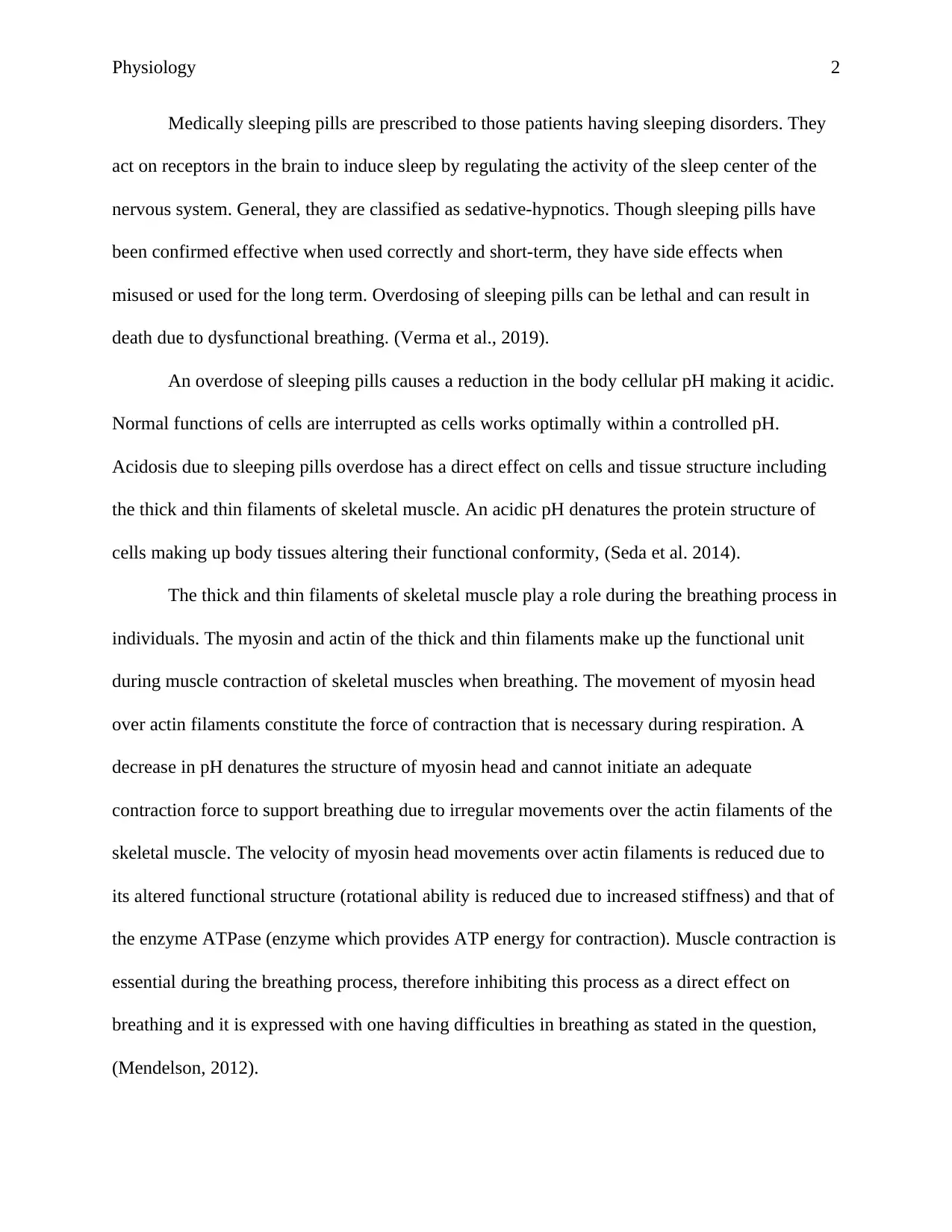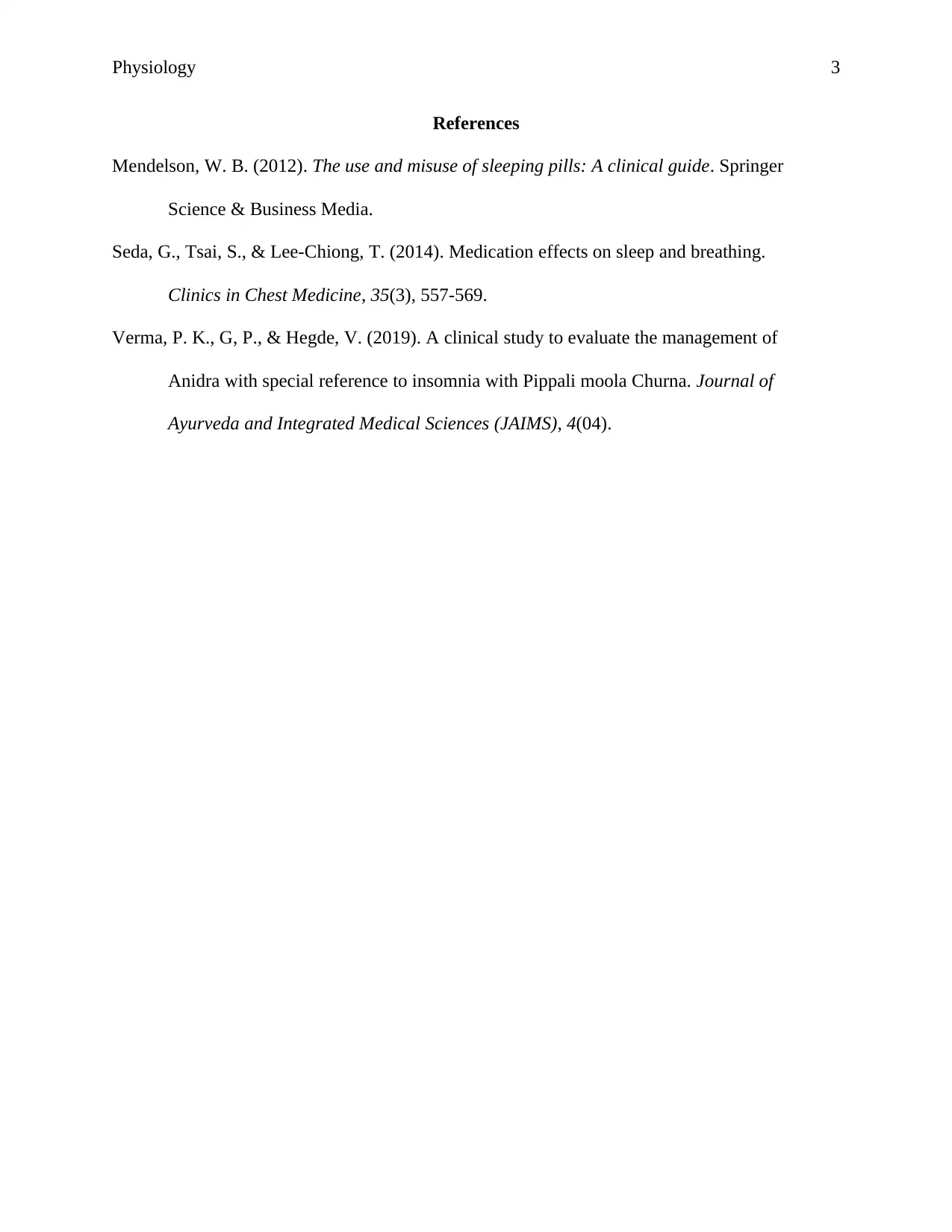Physiological Impact of Sleeping Pills on Breathing and Muscle
VerifiedAdded on 2022/09/22
|3
|483
|19
Report
AI Summary
This report delves into the physiological effects of sleeping pills, particularly their impact on muscle function and respiration. The report discusses how these pills, often prescribed for sleep disorders, can lead to adverse effects. The report examines the mechanism by which sleeping pills work, specifically the impact of an overdose on the body's pH balance, leading to acidosis. This acidic environment denatures the proteins in skeletal muscle, affecting the thick and thin filaments responsible for muscle contraction. The report explains how this process impairs the function of myosin and actin, reducing the force of muscle contraction and ultimately affecting the breathing process. It references relevant studies to support its analysis, providing a comprehensive overview of the physiological consequences of sleeping pill misuse and its impact on breathing difficulties.
1 out of 3





![[object Object]](/_next/static/media/star-bottom.7253800d.svg)